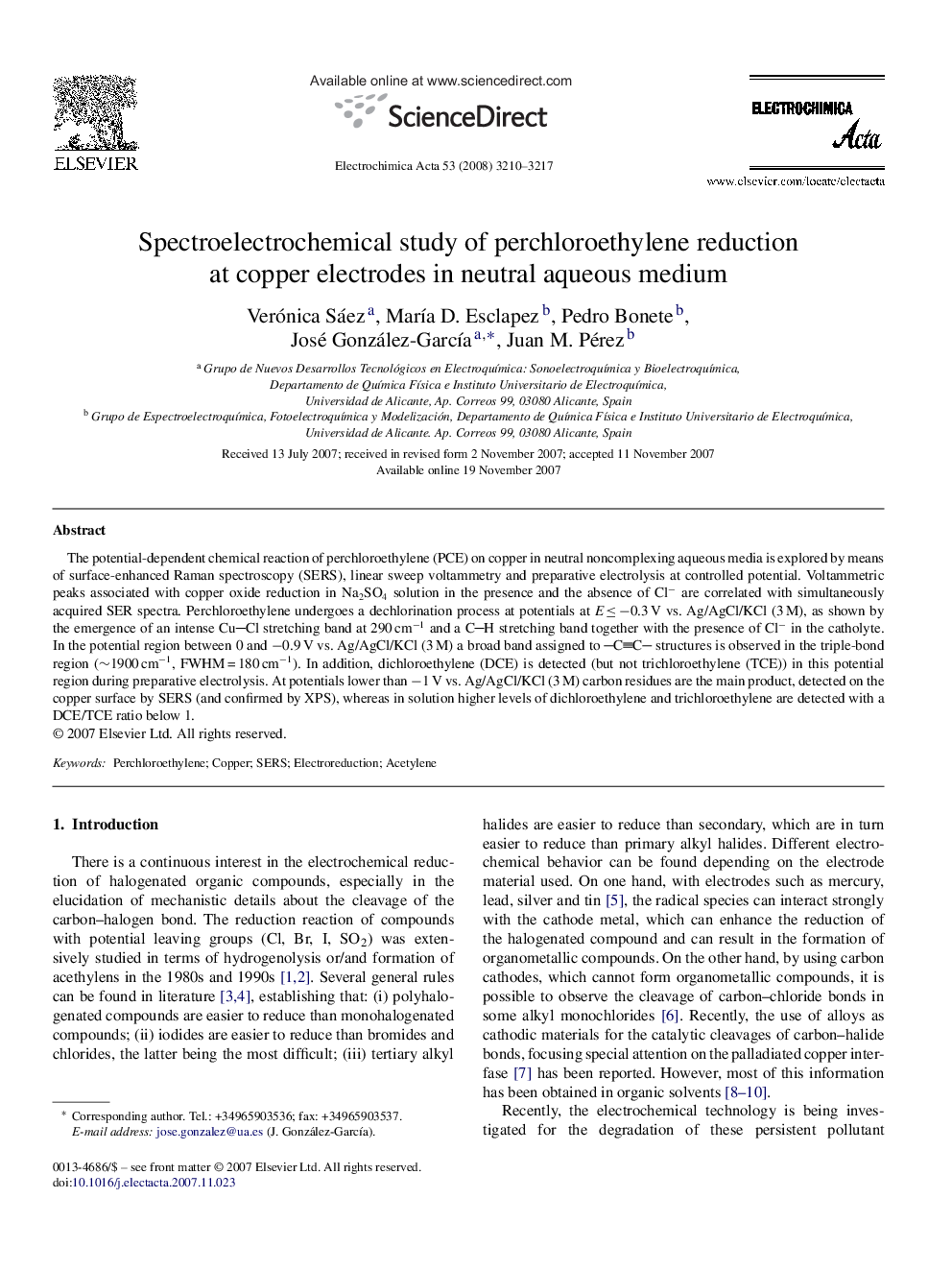| Article ID | Journal | Published Year | Pages | File Type |
|---|---|---|---|---|
| 193502 | Electrochimica Acta | 2008 | 8 Pages |
The potential-dependent chemical reaction of perchloroethylene (PCE) on copper in neutral noncomplexing aqueous media is explored by means of surface-enhanced Raman spectroscopy (SERS), linear sweep voltammetry and preparative electrolysis at controlled potential. Voltammetric peaks associated with copper oxide reduction in Na2SO4 solution in the presence and the absence of Cl− are correlated with simultaneously acquired SER spectra. Perchloroethylene undergoes a dechlorination process at potentials at E ≤ −0.3 V vs. Ag/AgCl/KCl (3 M), as shown by the emergence of an intense CuCl stretching band at 290 cm−1 and a CH stretching band together with the presence of Cl− in the catholyte. In the potential region between 0 and −0.9 V vs. Ag/AgCl/KCl (3 M) a broad band assigned to CC structures is observed in the triple-bond region (∼1900 cm−1, FWHM = 180 cm−1). In addition, dichloroethylene (DCE) is detected (but not trichloroethylene (TCE)) in this potential region during preparative electrolysis. At potentials lower than −1 V vs. Ag/AgCl/KCl (3 M) carbon residues are the main product, detected on the copper surface by SERS (and confirmed by XPS), whereas in solution higher levels of dichloroethylene and trichloroethylene are detected with a DCE/TCE ratio below 1.
